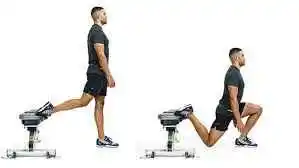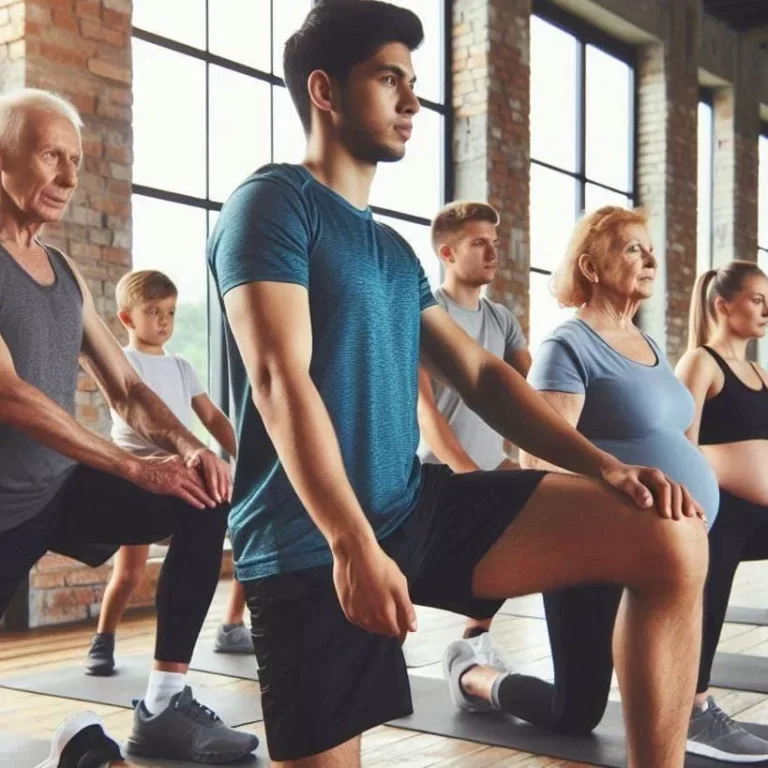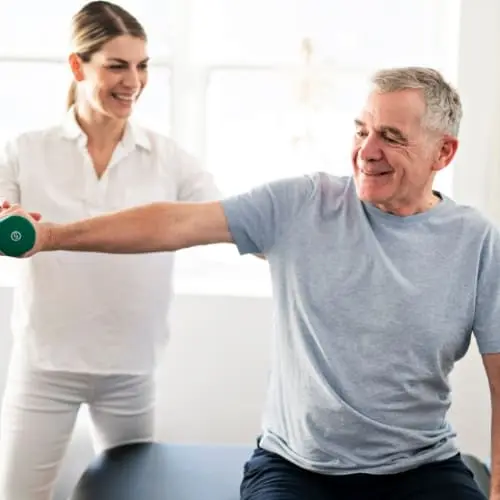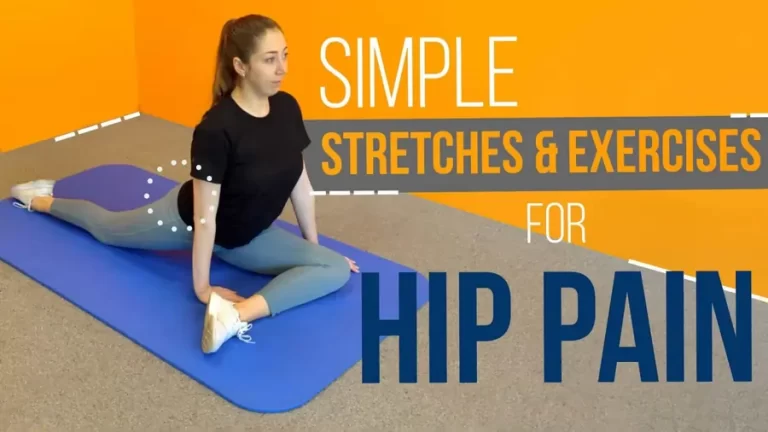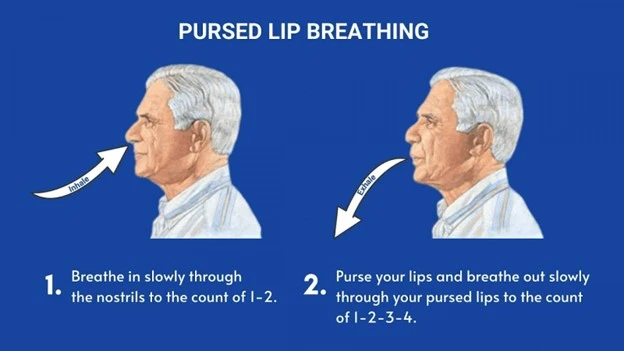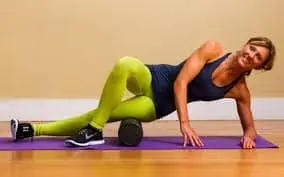Bulgarian Split Squat Exercise
What is the Bulgarian Split Squat?
Bulgarian split squat exercise are split squats performed with the back leg elevated. Consider it a variation of the single-leg squat. By balancing on the weighted leg and lowering yourself onto your stabilizing leg in front of your body, you can do a traditional single-leg squat.
The Bulgarian split squat involves moving the balancing leg behind the body. It keeps raised during the exercise, much like a single-leg squat, but it doesn’t simply stay there. Instead, it lies flat on a bench, band, or similar object.
Particularly Targeted Muscles:
Bulgarian split squats are a good complex exercise since they train many joints and muscles in one straightforward movement, including the upper quadriceps and the glutes.
The stabilizing supporting muscles used in this exercise are the glutes, hamstrings, and gastrocnemius. The Bulgarian split squat affects the hamstrings, glutes, and external obliques far more than the typical barbell back squat would. On the other hand, the quadriceps are not as heavily utilized as they would be in the back squat.
Bulgarian split squat exercise benefits:
- Improve Your Lower Body Exercise Program
Exercises for compound lower body strength maintain stability, challenge the body, and burn a lot of calories all at once. By progressing from a standard squat to a Bulgarian split squat, you’re improving the efficiency of your compound movement.
All the same, muscles utilized in a regular squat are needed for this single-leg exercise, but you must concentrate on one side and have superb balance. It’s more difficult and an excellent approach to advance your lower body training.
- Perform them whenever and wherever you are
A Bulgarian split squat can be performed anytime, any place, and without any special equipment. All you need is a platform that fits your back foot and a little room. Alternatively, you might use a sturdy chair or a bed in place of an exercise bench.
- Improving flexibility in the hip flexors
The Bulgarian split squat gives you a lot of hip and knee range of motion. By expanding the range of motion, it is possible to reduce muscle tension and improve hip mobility and flexibility. Split squats resemble a dynamic yoga position.
- Gain better balance
It is balanced to be able to maintain your center of mass over your support base. However, your ability to perform workouts involving bilateral straight motions will only help with balance, which generally reduces with age. Bulgarian split squats are one exercise that evaluates and improves balance.
- Reduce the pressure on your lower back
You don’t need to use as much weight for one-leg exercises as you would for leg presses and squats. When you are more lightweight, split squats with the rear foot up are far simpler on your lower back. Many exercisers find that their body weight is sufficient to provide effective workouts.
- Beneficial to your glutes
Bulgarian split squats are great for increasing the height, strength, and toning of your buttocks if you have a wide stance. This workout will improve the appearance of your booty. Put your front foot on a 3–6 inch platform to increase the butt-centricity. This small rise will allow you to press your buttocks harder and execute a split squat.
- Become better at running
Frequent practice of Bulgarian split squats improves your leg strength and increases your running speed. If you want to run faster or are an athlete, you must include this in your training schedule.
- Gain more muscle mass and strength
Split squats are a fantastic exercise that can help you improve your legs and gain muscle. The more you train, the more muscular and single-leg strength you will get. If you use weights, this exercise will become even more effective and tough.
- Wonderful for lowering body fat
Bulgarian split squats are calorie-burning exercises because they work so many powerful muscles. You will also be breathing and heart rate faster, which may help in fat burning and weight loss.
How to do a Bulgarian split squat:
- A bench or a strong chair is required for the Bulgarian split squat.
- As your muscle memory for the action improves, you can increase your resistance with dumbbells or kettlebells.
- To begin, stand around two feet in front of a knee-level seat or step.
- Raise your right leg to maximum length on the stool behind you.
- To make a quick lunge, keep your right foot shoulder-width apart and far enough in front of the bench or chair.
- You can move about to get the perfect spot for you.
- If a closer foot position works, make sure your left knee does not cross over your toes as you lower.
- Keeping your shoulders back, your waist slightly bent, and your core contracted, lower yourself onto your left leg, bending the knee.
- When performing a Bulgarian split squat with your quad taking over, stop before your knee reaches your toes.
- When performing a Bulgarian split squat, your left thigh should be parallel to the floor once your glutes are no longer being used.
- Push up with your left foot and reposition yourself using the strength in your quadriceps and hamstrings.
- Once you have performed the necessary number of repetitions on this leg, put your left foot back on the bench.
- Then relax.
Bulgarian Split Squats Video
Additional Bulgarian Split Squat Variations:
You can attempt its various modifications once you’re familiar with the fundamental form of the squat as explained above. Resistance can be increased by adding weights in the form of kettlebells, dumbbells, or barbells. Exercise with resistance becomes more intense and allows for greater activation of the muscles.
Bulgarian Split Squat with Weights
- Place dumbbells on your thighs and sit on a seat or other sturdy surface.
- Stretch one leg forth and to the outside a little bit.
- Dumbbells should be positioned on either side of the front foot.
- Keep your heel in the same place as you stand up.
- Rather than maintaining the toe vertical, place the back foot on the bench and turn it to the side.
- This improves balance by expanding the bench’s contact area.
- Pick up the dumbbells from the floor, keeping your front foot flat on the ground and both feet separated.
- To concentrate on your quadriceps, maintain a straight posture throughout the workout.
- Alternatively, you may bend your body forward and focus on your posterior chain and glutes.
- Don’t lay the dumbbells on the ground after lowering yourself to that point.
- Maintain your hand support while using your working muscles.
- Raise yourself back up to the beginning position while keeping your posture straight to work your quadriceps or bending forward to work your glutes.
- Then relax.
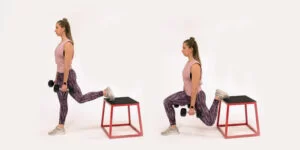
Zercher Bulgarian Split Squat
Bulgarian Zercher Split Squats are a special kind of barbell exercise. this exercise involves holding the barbell in the front of the upper body, at the angle of the elbows.
- The lifter will start a Zercher Bulgarian split squat by heaving a barbell up to sternum height in the bend of their elbows, focusing on the curvature of their shoulders and upper back.
- The lifter places one foot carefully on a bench behind them while maintaining the other flat on the ground after the barbell is stable inside their arms.
- This should be similar to the standard split squat standing used in Bulgaria but with a slightly more upright angle to the upper body.
- With their body in the proper position, the lifter only needs to bend their knees and lower themself till their back knee flexes to a 90-degree angle.
- When the level is ideal, the lifter pushes through their heel and stands back up, continuing to pay attention to the angle of their body.
- The exercise is finished when you are upright once more.
- Then relax.
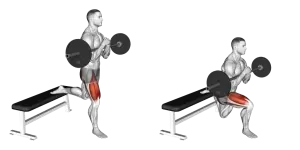
The Bulgarian Split Squat with Elevated Heels
As the name suggests, the heel-elevated Bulgarian split squat is just a regular split squat performed with the heel lifted in front, frequently with the help of a weight plate or wedge.
- The lifter only needs to place a weight plate or other such object below their heel while maintaining the regular position to perform a heel-elevated Bulgarian split squat.
- This includes placing one foot higher than the other and supporting the majority of the body weight with it.
- Next, the lifter lowers oneself until both knees are at a 90-degree angle by simultaneously bending both of them, making sure that the knee is following up in the same direction as the toes below it.
- The lifter may notice that their upper body moves forward to adjust for balance, depending on the angle at which the heel is elevated.
- Such a mistake could lead to excessive pressure on the ankles and knees.
- The lifter should, instead, push their glutes back to help with balance by altering their pelvis forward.
- To finish the repetition, the lifter pushes into the wedge under their heel and moves their body back slightly before standing back up.
- Then relax.
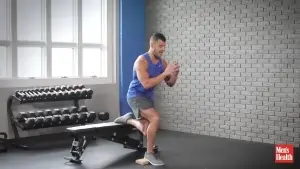
Split Squat
- Although they are sometimes used in the same sentence, the terms “split squat” and “Bulgarian split squat” indicate two different variations of the exercise.
- The Bulgarian split squat is performed with the rear leg elevated on a bench or solid chair, whereas the split squat is performed without the back leg raised.
- Keep in mind that this is not the same as a lunge when the back leg is also used in the exercise.
- Apply the same technique but with your back foot planted on the floor.
- Although the entire movement should be supported by your front leg, you can use your back leg to help maintain balance.
- Then relax.
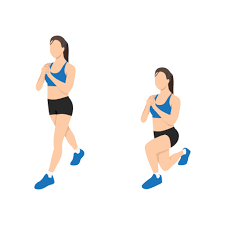
Bulgarian split squat using an exercise ball
- The Bulgarian split squat requires proper leg spacing and balance.
- Make it more difficult to find that balance if you’re genuinely attempting to increase the challenge.
- Squatting with your back leg resting on an exercise ball makes it harder to use it as support.
- During a Bulgarian split squat, your attached back leg provides considerably additional balance and stability.
- Then relax.
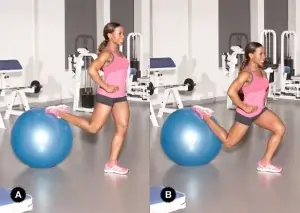
Eccentric Bulgarian split squat
- To maximize activation in this extremely difficult variation, go as slowly as possible.
- This forces you to concentrate on proper form while contracting your legs.
- When you finally get it right, the effects need to be obvious.
- Then relax.
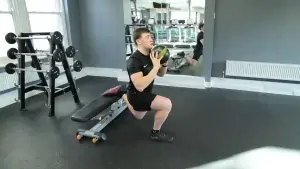
Which Is the Most Effective Bulgarian Split Squat Variation?
Most varieties of the Bulgarian split squat are just minor adjustments to an otherwise useful workout. Since they are all fairly comparable, there isn’t a single “best” version.
If you’re not sure which to choose, we advise continuing with the traditional version until you find yourself in need of any of its modifications, including a deeper range of motion or greater focus on the quadriceps.
If these variants hurt or don’t fit your demands, try some other exercises like lunges, step-ups, or variations on the squat.
Which split squat variations are available in Bulgarian?
Many other exercises have comparable effects, whether you want to keep your workouts interesting and enjoyable or you simply don’t feel comfortable performing Bulgarian split squats. These are a few that you can use in the gym or at home.
Classic squat
Returning to the basics is perfectly okay if you’re preparing for a more difficult move.
- Position your feet shoulder-width apart.
- Turn your feet outward by about ten degrees.
- Be careful not to let your heels lift off the ground.
- Maintain a wide chest, neutral spine, and relaxed shoulders.
- Leading with your hips as if you were going to take a seat, lower yourself into the squat.
- Bend as much as you can while keeping your spine neutral.
- Hold this position for a few seconds.
- Try to keep your thighs in a parallel posture with the floor.
- Push through your heel to return to your previous position.
- Then relax.
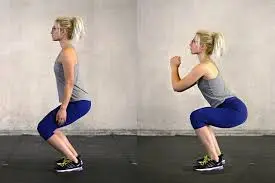
Pistol squat
Strength, balance, and mobility are all improved with this one-legged squat.
- Put your feet together and extend your arms in the direction toward you.
- As you lower into the squat on your right leg, lift and maintain the straight posture of your left leg.
- Lower your left leg till it is parallel to the ground.
- Hold this position for a few seconds.
- To get back to the beginning position, push through your right heel.
- Then, repeat with the other leg.
- Then relax.
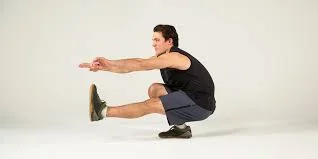
Sidekick squat
A kick increases strength in your lower body and raises your heart rate during a squat.
- Enter a typical squat position.
- Utilize your heels to get yourself back up.
- Step into a standing position and extend your right leg as far as possible.
- Check to see if your kicking leg is back in position before doing your next squat.
- Kick with the other leg and repeat.
- Then relax.
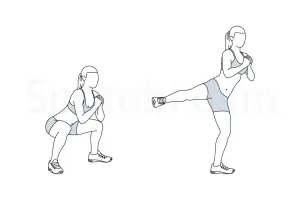
Curtsy squat
In addition to being helpful, the curtsy squat works your glutes harder.
- With your hands on your hips, take a shoulder-width position with your feet wide.
- To squat using your left leg, step backward as you crossover your right leg over your left leg.
- Lower till your left leg is in line with the floor.
- Hold this position for a few seconds.
- Apply force to your left heel to return to the starting position.
- Continue on the opposite side.
- Then relax.
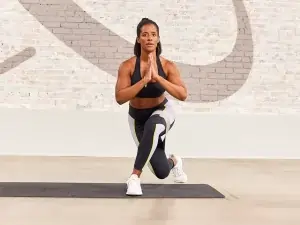
Jump squat
Coordination and explosive leg strength are put to challenge in a jump squat.
- Step out with your feet shoulder-width apart.
- Make a 10-degree angle with your feet facing outward.
- Continue to keep your heels firmly on the ground.
- Maintain a neutral spine, open chest, and back shoulders.
- Hold the position of a chair as you lower yourself into the squat by leading with your hips.
- Stretch your legs straight and jump up.
- Step back into the starting position and land gently.
- Then relax.
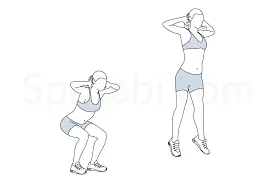
Safety guidelines and preventative measures:
When performed correctly and using the core, the Bulgarian split squat is a safe exercise. Verify that your feet are in the right posture and alignment before trying to fight against the desire to lean forward from the hips and put your center of gravity in front of your front knee.
If the knee is overexerted, this could cause damage to it. This exercise is usually risk-free for anyone who has been strength training for some time and has strong lower body strength, balance, and coordination. If you have never done a Bulgarian split squat before or need help staying balanced when performing regular lunges, this exercise is still something you should be getting ready for.
Additionally, if you have any physical condition that restricts your range of motion or flexibility which are essential for completing this exercise correctly such as knee or ankle pain, this exercise is not recommended for you.
When doing the split squat variation exercise with your back foot balanced on the floor, stop if you feel any pain or difficulty.
Bulgarian split squats or lunges: which is better?
While there is no one perfect workout, there might be one that works better for you than others based on your goals and level of experience. For example, if you’re new to training and not sure whether to perform a split squat or a lunge, you might want to put off Bulgarian split squats until you can perform lunge variants with proper form.
Pause for a moment. You may strengthen your lower body by doing lunges. You just lower yourself until your legs are at a 90-degree angle on both sides by moving one foot forward (front lunge) or back (reverse lunge).
Given that the Bulgarian split squat is a progression of the lunge, either exercise can be suggested, depending on the strength and ability of the individual.
Bulgarian split squats should only be performed once you have mastered step-ups, front or back lunges, walking lunges, and normal split squats. The ability to lunge and squat with both feet on the floor must be mastered before adding further stability and range-of-motion components.
However, if you are an advanced exerciser who has mastered those motions and your goal is to improve balance and single-leg strength while increasing load, the Bulgarian split squat is a great addition to your lower-body routine.
Which mistakes should you stay away from the most often?
When performing the Bulgarian split squats, anyone can make faults because it’s common to make mistakes when you’re first learning or don’t have an instructor.
- Positioning your back leg ahead of the front
It will be hard for you to stay balanced if your back foot is right behind your front foot. For the most part, bilateral balancing fails to keep your balance during a squat because your front foot provides most of the support and your front leg initiates the activity. Make sure your front and back feet are about hip-distance apart as you plant your back foot on the seat behind you.
- Excessive forward hip flexion
When performing the Bulgarian split squat downward, it’s common to overlook the importance of your core, specifically the spinal constructors and abdominal muscles. By moving your weight too far forward, this forward lean reduces the exercise’s main benefits and increases the chance of overstressing the front knee.
You run the risk of getting hurt if you progress to a Bulgarian split squat while holding a barbell balanced across your shoulders. Roll your shoulders back before beginning the downward portion of the exercise. For every repetition, maintain the same alignment and posture. using the back leg to support the movement.
It is important to remember that the Bulgarian split squat requires only one leg. Though it’s supposed to help with balance, the back leg isn’t supposed to be used for the exercise, therefore it’s more of a lunge. You should be able to “shake” your rear leg during the exercise to verify that it is still relaxed and not bearing any of your weight.
- Getting up on your toes
Squatting down and rising onto the foot and toes of your front is a terrible habit that may arise when alignment and technique are incorrect. One of two things is typically indicated by this: To maintain better alignment and balance, you must either extend your front foot or, if you are squat while bending forward at the hips, stay on your toes to maintain a forward shift in your weight.
Restart your exercise if you find yourself stepping over the toes or heel of your front foot. When performing the exercise, make sure that your body is upright and check that your front foot is in the correct position you might need to move it forward.
What risks are involved in doing Bulgarian split squats?
Bulgarian split squats are generally safe for people of moderate to advanced fitness. However, if you’re not experienced with exercise, you might want to try a more basic version. Balance, lower body strength, and coordination are somewhat required for this workout.
You can finish this task safely by using the following suggestions;
- Keep the right form
Poor form might make your workout less effective and increase your risk of injury.
- Warm-up
Be sure to properly stretch your lower body before starting these squats.
- Get your balance back
Put your feet down as gently as you can. Remember that the key to performing this squat effectively is balance and proper alignment.
- Take good care of your knees
If you have previous experience of knee problems, you should not perform Bulgarian split squats. Doing too-deep squats might put stress on your joints.
Does performing the Bulgarian split squat have any adverse effects?
Unless the posture is incorrect, there are no adverse effects. It has no negative effects on your health when done properly. This workout is not suitable for you, though, if you have knee or ankle pain or a health issue that restricts your range of motion. Additionally, you should stop performing the split squat variation exercise with your back foot balanced on the floor if you notice any pain or discomfort.
Before beginning any new exercise sessions, make sure to speak with your trainer and doctor.
Summary
Given this, the Bulgarian split squat is among the best lower-body exercises for building stronger quadriceps, hamstrings, and glutes. You need to include this workout in your program since it is more advantageous than leg presses and squats.
The Bulgarian split squat may require some early balancing practice to become effective. It’s one of the greatest leg workouts you can do, though, if you can get the hang of it. This exercise is quite effective, even if it might be better described as “rear foot raised split squats” and has nothing to do with Bulgaria.
FAQ:
What are the benefits of Bulgarian split squats?
Many benefits come with the Bulgarian split squat. As a lower-body exercise, it tones the muscles in the legs, including the quadriceps, hamstrings, glutes, and calves. It’s a single-leg workout, so your core needs to work extra hard to maintain your balance.
What divides a squat from a Bulgarian split squat?
Unlike squats, these exercises concentrate on one leg at a time, individually targeting the lower body. Because they perform with only one main leg, these two lifts place additional demands on balance, stability, coordination, and single-leg strength.
How is a Bulgarian split squat different from a lunge?
Split squats and lunges are two exercises that work the same muscles in the lower body. This works the quadriceps, glutes, hamstrings, calves, and hip flexors. But lunges place additional strain on the adductors and abductors, the muscles that run the length of the leg. Split squats are a great way to strengthen your quadriceps and glutes.
Why is it that Bulgarian split squats are so hard?
Because the working leg has to support the majority of the body weight as well as any additional weights used in the exercise, the Bulgarian squat demands extensive leg training. This additional load can feel like a significant challenge compared to normal squats, even with lighter weights.
What is the finest split squat?
Front foot raised split squats are a great variation to help reduce knee flexion on the front leg for lifters who are taller, have restricted mobility in their quadriceps or hips, or are treating knee problems.
Why is the Bulgarian split squat so time-consuming?
This method involves balance and stability because it places most of your weight on your front leg, which makes it challenging. “It genuinely does start to become a single-leg variant.
Are Bulgarian split squats beneficial for speed?
A runner’s strength and balance are tested in the Bulgarian split squat.”Because it simulates the way the legs move during sprinting or speed work, adding this exercise to your program can help you run faster and stronger.
Could I practice the Bulgarian split squat every day?
Being aware of the situation is key. If volume and intensity are properly controlled, you can train your legs and include Bulgarian split squats three days a week.
Does the Bulgarian split squat benefit athletes?
Being in a single stance will increase the athlete’s awareness. Maybe the greatest workout to translate to a variety of sports is this one. Every time a training session is structured including the Bulgarian split squat, perform at least five sets of the exercise.
How do weights become held in Bulgarian split squats?
A single or two dumbbells can be used for exercises. If you use one, you can target your quadriceps more by placing your hand on the side of the straight leg and your glutes more by placing your hand on the side of the supported leg.
What is the primary goal of Bulgarian split squats?
Your quadriceps, glutes, and adductors are the main muscles worked by the Bulgarian split squat. Lower back strain can be reduced by using bodyweight exercises or by holding a dumbbell in each hand rather than a barbell across your shoulders.
Why do people love split squats so much?
One fantastic unilateral exercise that allows us to bias one leg or the other is the split squat. This is especially helpful because walking and climbing stairs are just two examples of the many everyday activities that call for stability on one leg. entering and exiting a vehicle or bathtub.
Is balance improved by split squats?
To increase balance and activate certain stabilizing muscles, the rear-foot-elevated split squat is superior to the regular squat.
Which is preferred Bulgarian or Squat?
Identifying and correcting muscular imbalances is one of the key benefits of Bulgarian squats. They help focus attention on any differences in strength or range of motion between your legs because they are done one leg at a time.
Are Bulgarian Split Squats limited to experienced lifters only?
No, even beginners can complete the Bulgarian Split Squat. Before adding any weight, it’s important to start with body weight and perfect the proper form.
Is it possible to develop larger legs with the Bulgarian Split Squat?
Since it works the quadriceps, hamstrings, and glutes three important lower-body muscular groups the Bulgarian Split Squat may be helpful in the development of larger legs.
How can I fit the Bulgarian Split Squat into my training routine most effectively?
In your training program, the Bulgarian Split Squat can be utilized as a primary exercise or a supporting lift. Starting with good form is important, and weight and frequency should be added gradually over time. When creating a training program that is suited to your goals, getting advice from a qualified personal trainer or strength and conditioning coach can also be beneficial.
References:
- “How to Do a Bulgarian Split Squat the Right Way,” by Nicole Davis www.healthline.com/health/fitness-exercise/bulgarian-split-squat#common-mistakes, Nov. 21, 2019.
- S. Bhattacharya (2024, 4 April). Bulgarian split squat: Use this workout to strengthen your glutes. Bulgarian Split Squat: https://www.healthshots.com/fitness/muscle-gain
- Everything You Should Know About Split Squats in Bulgarian | ISSA. https://blog.issaonline.com/post/everything-you-should-know-about-split-squats-in-bulgarian.
- Christa Sgobba CPT, Ayuda, and Tiffany. “The Bulgarian Split Squat: A Single-Leg Workout to Tone Your Glutes and Quads” On May 6, 2022, SELF-published a story on how to perform Bulgarian split squats.
- On July 26, 2021, Appleton, C. Form and Technique of the Bulgarian Split Squat Bulgarian Split Squat Exercise: Correct Form and Lift Technique, https://www.myprotein.co.in/blog/training/
- R. Stobo, 2022 May 23. Work Your Gluteus to the Limit: The Bulgarian Split Squat Method. Bulgarians against Classics: A Comparison of Bulgarians and Split Squats on Greatist.com
- Image 2, D. Luna (2023, Sept. 18). Five Greatest Split Squat Variations in Bulgaria (with Pictures!). Encourage US. Bulgarian split-squat variations are available at https://www.inspireusafoundation.org/
- Image 3, On September 6, 2016, M. H. Bulgarian Split Squat With Elevated Heels. YouTube. YouTube: https://www.youtube.com/watch?v=8IBJqaCBVos
- Image 4, Workout: Split Squats. (n.d). Exercise for Split Squats: https://ar.inspiredpencil.com/pictures-2023/
- Image 5, C. B. R. V. G., Aesthetics (2012, February 24). Pinterest. https://in.pinterest.com/pin/131097039122915293/. Yoga.
- Image 6, Online store 111504443 (n.d.). A product detail page for SVIPolylatur 111504443.html
- Image 10, C. Team (n.d.). Five intense exercises to tone your booty with fabric bands. 5 Fiery Workouts for Your Fabric Band Booty Workout: https://centr.com/blog/show/25810
- Image 11, D. June 1, 2021. Exercise Guide with Illustrations for Jump Squat. Jump squat exercise guide on SPOTEBI: https://www.spotebi.com

